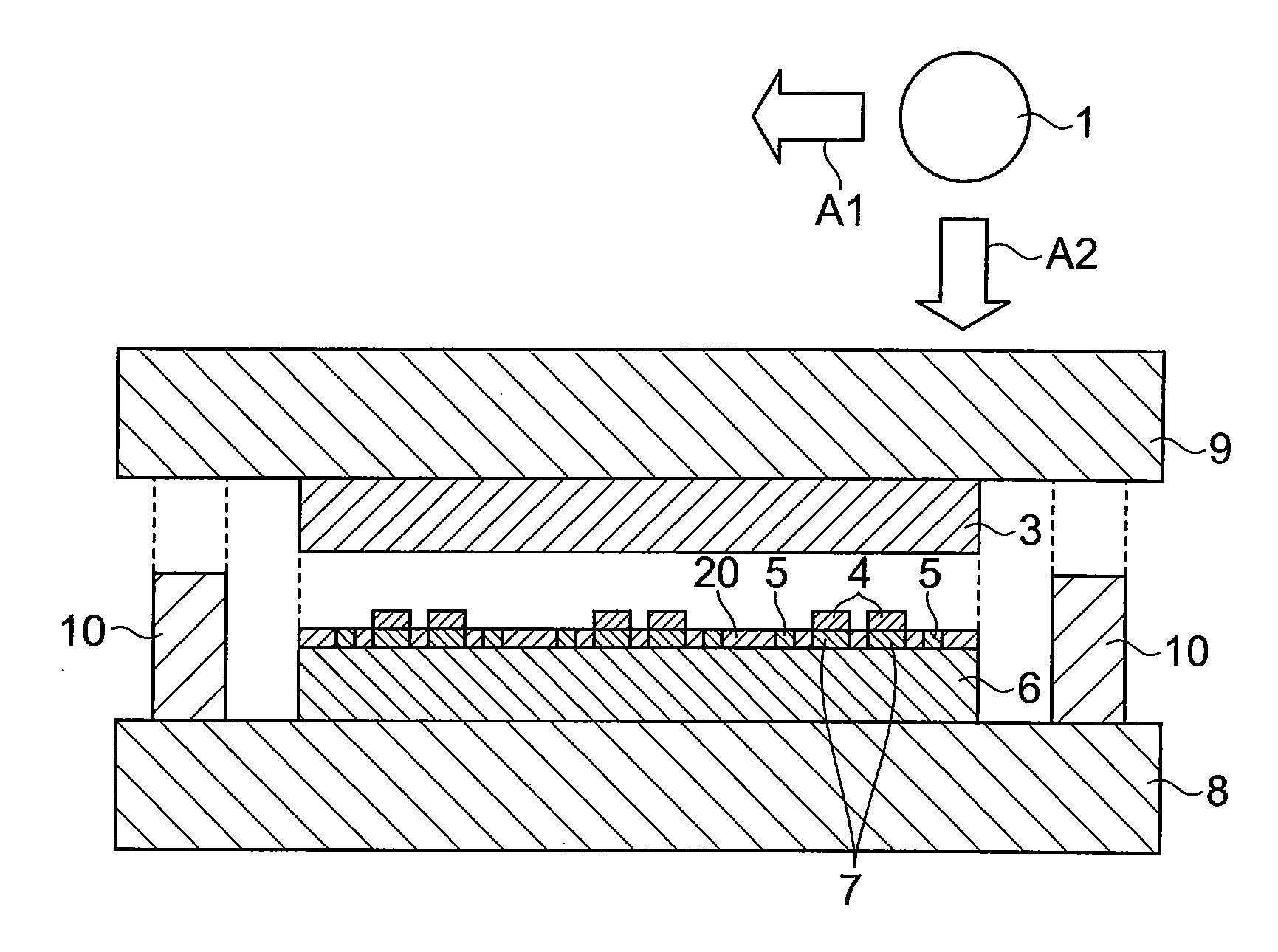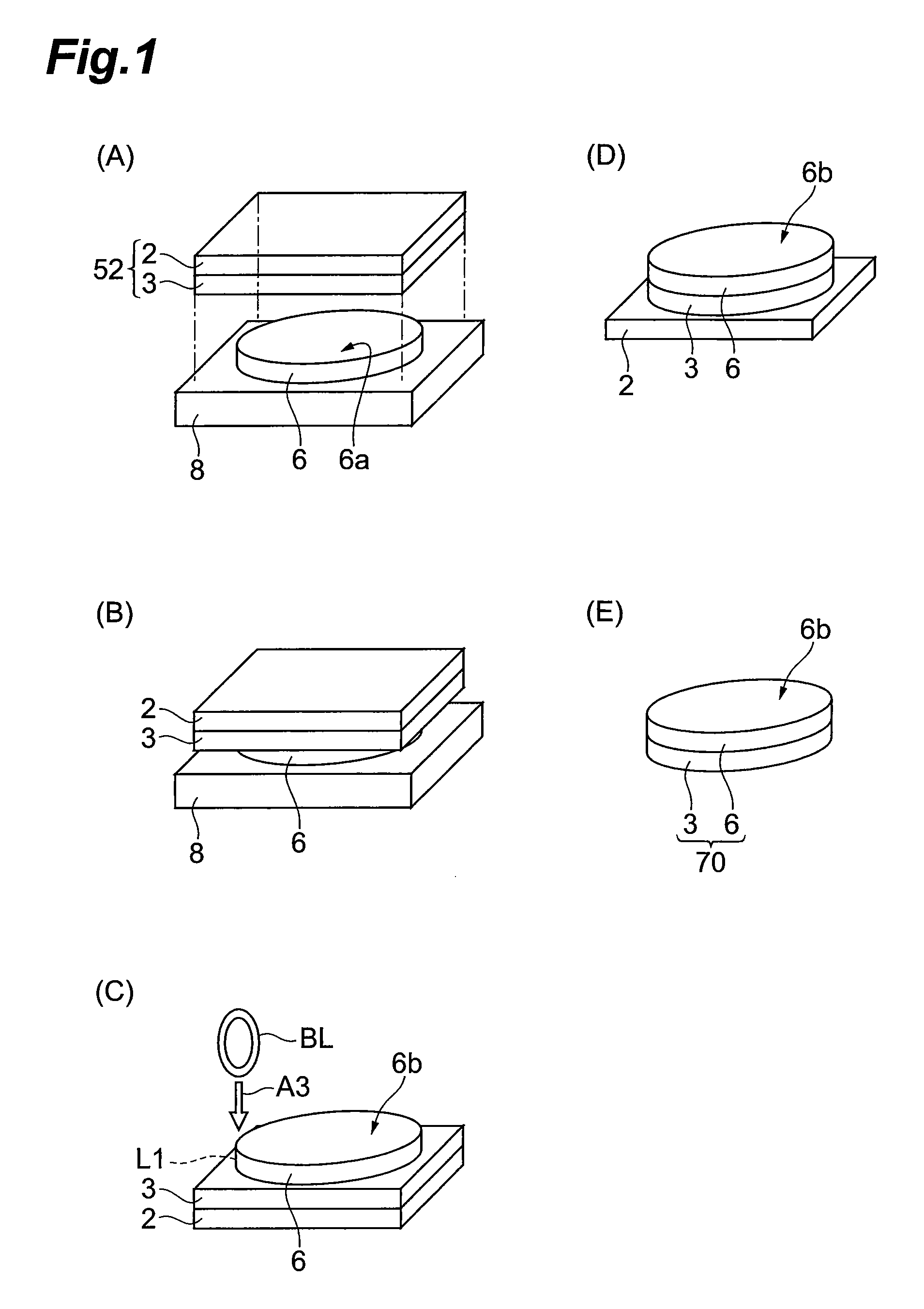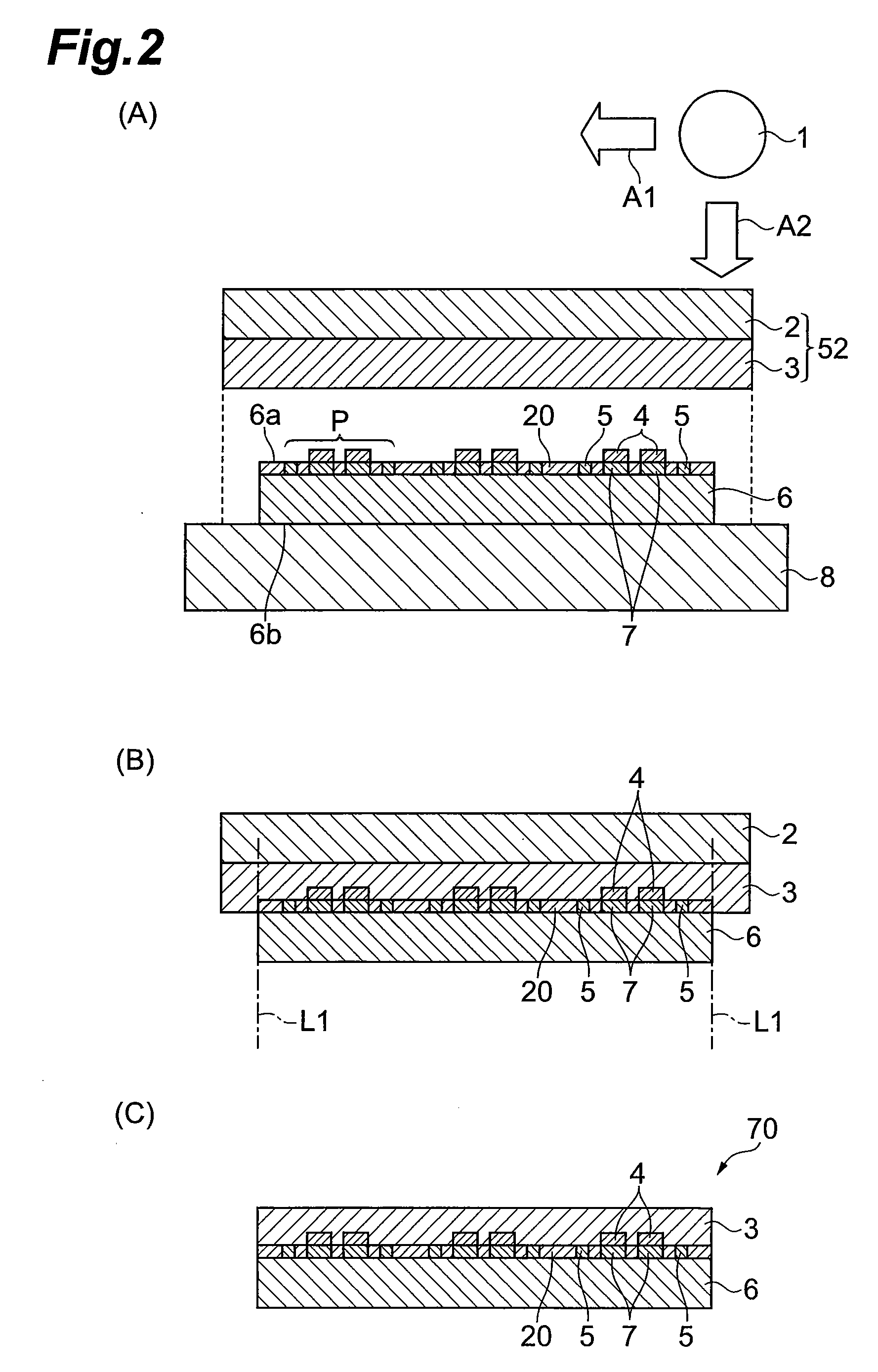Production method of semiconductor device and bonding film
a production method and semiconductor technology, applied in the direction of individual semiconductor device testing, semiconductor/solid-state device testing/measurement, instruments, etc., can solve the problems of increasing the risk of solder breakage, increasing the reflow temperature, and taking a long time to cope with the narrowing pitch and narrowing, etc., to achieve a pollution-free singulated semiconductor chip
- Summary
- Abstract
- Description
- Claims
- Application Information
AI Technical Summary
Benefits of technology
Problems solved by technology
Method used
Image
Examples
first embodiment
[0058]FIG. 1 to FIG. 8 are process charts schematically showing a method of manufacturing semiconductor devices according to a first embodiment.
[0059]Layered Product Preparation Step
[0060]First, as shown in FIG. 1(A) and FIG. 2(A), for example, a semiconductor wafer 6 such as a silicon wafer is placed on a chuck 8. An electrode pad 7 and an alignment mark 5 are formed in a circuit surface 6a of the semiconductor wafer 6. An insulating film 20 is filled between the electrode pad 7 and the alignment mark 5. The surfaces of the electrode pad 7, the alignment mark 5, and the insulating film 20 are planarized. A projection electrode 4 (terminal) projecting from the surface of the insulating film 20 is provided on the electrode pad 7. The electrode pad 7, the alignment mark 5, and the projection electrode 4 form a circuit pattern P. A rear surface 6b (surface opposite to the circuit surface) of the semiconductor wafer 6 is in contact with the chuck 8.
[0061]On the other hand, an adhesive s...
second embodiment
[0104]FIG. 9 is a process chart schematically showing a step in a method of manufacturing semiconductor devices according to a second embodiment. In this embodiment, the adhesive layer 3 of the adhesive sheet 52, which is processed in advance so that the size of the adhesive layer 3 may become substantially the same as the size of the semiconductor wafer 6, is laminated onto the circuit surface 6a. Thereafter, by peeling / removing the separator 2 from the adhesive layer 3, the layered product 70 comprising the semiconductor wafer 6 and the adhesive layer 3 is formed as shown in FIG. 2(C). Thereafter, as in the first embodiment, the semiconductor device 50 shown in FIG. 8(B) can be manufactured. In this embodiment, the same operational effect as that of the first embodiment is obtained. Furthermore, in the case of this embodiment, the cutting step after laminating the adhesive layer 3 onto the semiconductor wafer 6 is not required, thereby increasing the operating efficiency.
[0105]In ...
third embodiment
[0106]FIG. 10 is a process chart schematically showing a step in a method of manufacturing semiconductor devices according to a third embodiment. In this embodiment, the adhesive layer 3 is formed on the dicing tape 9. The size of the adhesive layer 3 is processed in advance so as to be substantially the same as the size of the semiconductor wafer 6. On the other hand, the semiconductor wafer 6 and the dicing frame 10 are placed on the chuck 8. Thereafter, the semiconductor wafer 6 is arranged so that the circuit surface 6a thereof may face the adhesive layer 3 side, and then the dicing tape 9, in which the adhesive layer 3 is formed, is laminated onto the circuit surface 6a of the semiconductor wafer 6 using the roller 1. Thus, the structure shown in FIG. 4(B) is obtained. Thereafter, as in the first embodiment, the semiconductor device 50 shown in FIG. 8(B) can be manufactured. In this embodiment, the same operational effect as that of the first embodiment is obtained. Moreover, t...
PUM
| Property | Measurement | Unit |
|---|---|---|
| Thickness | aaaaa | aaaaa |
Abstract
Description
Claims
Application Information
 Login to View More
Login to View More - R&D
- Intellectual Property
- Life Sciences
- Materials
- Tech Scout
- Unparalleled Data Quality
- Higher Quality Content
- 60% Fewer Hallucinations
Browse by: Latest US Patents, China's latest patents, Technical Efficacy Thesaurus, Application Domain, Technology Topic, Popular Technical Reports.
© 2025 PatSnap. All rights reserved.Legal|Privacy policy|Modern Slavery Act Transparency Statement|Sitemap|About US| Contact US: help@patsnap.com



